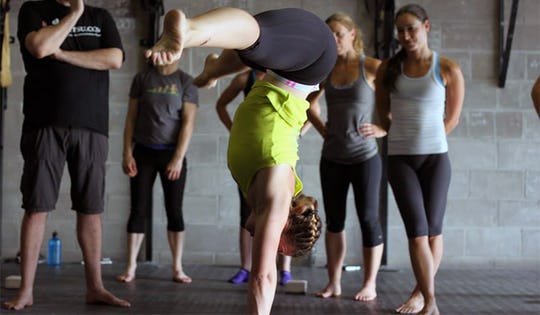You want to take your training to the next level? Then you’re going to need to start working on your flexibility. That doesn’t mean simply doing a post workout stretch! If you do a post-workout stretch, you are one step ahead of most, but that’s not going to give you a greater range of motion. If you want to be more agile, or you want to be stronger, you need to do MORE than just stretch.
I’m lucky that I’ve been involved in sports and activities that require flexibility my whole life. Some people are lucky as far as their genetics, but even if you’re not lucky you can still be more flexible than you are today if you work at it.
I grew up as a competitive gymnast. In an effort to pursue a career in acting and stunts, I replied to an audition notice for the circus and fell in love with live entertainment. I worked and trained with The Underground Circus in Vancouver for three and a half years, studied dance to improve my performing abilities, and later moved to Australia for three years to study circus where I specialized in hand balancing. While in Australia, I created a class devoted to increasing peoples’ range of motion. It is a class I wished existed for years, and I took it upon myself to share it with the world. I’ve been teaching these classes in Melbourne, Vancouver, and now in Montreal.
One of the reasons that circus performers are able to do such high level amazing feats is because they train all elements of athleticism. Typically, circus performers will train strength, flexibility, hand stands, basic acrobatics, physical performance, and then they will spend 5-10 hours per week training their specialty on top of that!
Everyone has excuses, but there are solutions. Here are the top three excuses I get for why people don’t work on their flexibility:
Flexibility Excuse #1: It Hurts
Does it hurt when you train hard? Do your muscles get sore and burn? So, why can you put up with that pain but you won’t put in the effort to become an all-around athlete?
The main reason that it hurts when athletes who don’t have flexibility training try to work on their flexibility is that they don’t know how to relax. They think that if they tense their muscles and push as hard as they can they will become more flexible; it doesn’t work that way. If you look at a muscle in its tense state it’s hard as a rock. If you try to pull it apart with enough force, all that is going to happen is eventually it’s go- ing to crack. The same thing happens with your muscle if you stretch when it’s tense. A muscle in a relaxed state is more like dough. As you pull it apart it gets longer and longer as though you’re about to make a baguette. This is what we want.
The other reason it hurts is because people tend to hold their breath when they stretch. You need as much oxygen and blood flowing to the muscle; keep it warm and relaxed so that you are able to go deeper into the stretch without injuring yourself.
Flexibility Excuse #2: I Don’t Have Time
Ok, I get it, it does take time; so make time! Just an hour a week of focused flexibility training will really make a difference in your range of motion. Take a good 30 minutes to warm up and do some basic stretching without pushing it too far. After you’re warm, you can take another 20 to 30 minutes to push it that little bit extra.
Flexibility Excuse #3: “I don’t know how to work on my flexibility.”
This is a legitimate excuse. Being able to work on your flexibility with proper technique is important. If you haven’t been taught how to stretch properly, or what stretches to work on, then of course you can’t work on it. The solution is simple: find a trainer! Do you train with a coach for your sport? Do you work with a personal trainer for your strength work? What do you do when you want to learn a new skill to improve yourself as an athlete? You find time and a way to learn it. I highly recommend working with someone to correct your alignment and make sure you’re doing the stretch properly.It also helps to have some one to cue you into the right position when doing some of the more intense stretches where muscle isolation is involved.

)





